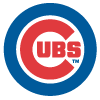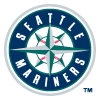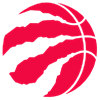Three times as many games are in the books compared to this time last week, but it's still early enough that the majority of reactions to players' stat lines are overreactions. We're still a week or two away from looking closely at stats that are more directly under a player's control such as strikeout and walk rates, and we're still months away from placing much stock in stats that involve more external factors such as ERA or batting average.
To help you keep your perspective and avoid those overreactions, here's a quick list of a few things that were true 11 days into last season:
- Tyler Naquin was tied for the league lead in homers.
- Ramon Laureano led the league in steals.
- Yermin Mercedes led all qualified hitters in batting average.
- Connor Brogdon led the league in wins.
- Jakob Junis was tied for the best ERA among qualified pitchers.
- Logan Webb was second to last among qualified pitchers in WHIP.
All of that serves as a reminder that we're still best served looking at the same things we focused on last week, like where a player is hitting in a lineup, whether he's a true starter or in a platoon role, how often he'll pitch in the ninth inning and whether his pitch mix or velocity have changed. We have far more to work with in all those areas this week, too. Was a pitcher's velocity down in his first start because he wasn't fully built up following a
Three times as many games are in the books compared to this time last week, but it's still early enough that the majority of reactions to players' stat lines are overreactions. We're still a week or two away from looking closely at stats that are more directly under a player's control such as strikeout and walk rates, and we're still months away from placing much stock in stats that involve more external factors such as ERA or batting average.
To help you keep your perspective and avoid those overreactions, here's a quick list of a few things that were true 11 days into last season:
- Tyler Naquin was tied for the league lead in homers.
- Ramon Laureano led the league in steals.
- Yermin Mercedes led all qualified hitters in batting average.
- Connor Brogdon led the league in wins.
- Jakob Junis was tied for the best ERA among qualified pitchers.
- Logan Webb was second to last among qualified pitchers in WHIP.
All of that serves as a reminder that we're still best served looking at the same things we focused on last week, like where a player is hitting in a lineup, whether he's a true starter or in a platoon role, how often he'll pitch in the ninth inning and whether his pitch mix or velocity have changed. We have far more to work with in all those areas this week, too. Was a pitcher's velocity down in his first start because he wasn't fully built up following a shortened spring, or is there something else going on? Is the reliever who got a team's first save chance merely one of the top options in a committee or is he a genuine closer? Those questions are much easier to answer after three series than they were after just one.
That said, it's not as if we should entirely ignore stats. We don't want to adjust our opinions of players by a significant amount based on stats alone this early in the season, but there are three categories where I'm definitely paying closer attention. First, particularly extreme results in stats that stabilize quickly like the aforementioned strikeout and walk rates shouldn't be ignored, even if those stats haven't stabilized yet. Second, even small-sample stats can give us something of an idea about the status of players who came into the year with injury question marks.
Third, and perhaps most importantly, I don't think it's a terrible idea to make moves at the fringes of your roster based on small samples. We shouldn't adjust our opinions of players significantly based on three series' worth of games, but can you really say that you liked your last pick or two significantly more than the best players who went unpicked? You likely were never expecting to keep your last few picks on your roster all year anyway. If they're performing poorly and someone on the wire looks particularly exciting, go out and get him even at this early stage. The opportunity cost is small enough that it shouldn't matter much if your move turned out to be based on an overreaction, and the upside of being the first to jump on a potential breakout is high.
With all that in mind, this week's risers and fallers will feature a mix of players who fit into the various categories mentioned above. Some have risen or fallen due to role changes, while others look different due to velocity changes. Others have had preseason questions answered, sometimes in positive ways and sometimes negative. Still others are players who looked like fringe options heading into the year and have small-sample numbers that make them worthy of being added or dropped.
RISERS
 Seiya Suzuki, OF, Cubs: I was primarily talking about injuries when I mentioned players who came into the year with significant question marks, but Suzuki clearly fits into the category as well. He posted elite numbers against NPB pitching, but how would he fare after making the jump to the toughest league in the world? If his .400/.543/.960 slash line is any indication, the answer is "quite well." All I really wanted to see from him at this point was for him to not look overmatched, and he's certainly managed that. His plate discipline has been excellent, as he has as many walks as strikeouts. He's also crushed the ball when he's hit it. His 110.9 mph max exit velocity sits in the 89th percentile, while his 93.0 mph average exit velocity sits in the 87th, and his 35.3 percent barrel rate leads the league. Exactly where his numbers settle once teams get more of a book on him remains to be seen, but everything he's shown so far indicates that he definitely has the ability to succeed at the highest level.
Seiya Suzuki, OF, Cubs: I was primarily talking about injuries when I mentioned players who came into the year with significant question marks, but Suzuki clearly fits into the category as well. He posted elite numbers against NPB pitching, but how would he fare after making the jump to the toughest league in the world? If his .400/.543/.960 slash line is any indication, the answer is "quite well." All I really wanted to see from him at this point was for him to not look overmatched, and he's certainly managed that. His plate discipline has been excellent, as he has as many walks as strikeouts. He's also crushed the ball when he's hit it. His 110.9 mph max exit velocity sits in the 89th percentile, while his 93.0 mph average exit velocity sits in the 87th, and his 35.3 percent barrel rate leads the league. Exactly where his numbers settle once teams get more of a book on him remains to be seen, but everything he's shown so far indicates that he definitely has the ability to succeed at the highest level.
 Nestor Cortes, SP, Yankees: I hesitated to include Cortes here, as his strong start isn't backed by any sort of velocity jump, but it's been so good I couldn't help but write him up. He's yet to give up a run through two outings and has paired a 48.6 percent strikeout rate with a 2.9 percent walk rate. There's of course the caveat that his latest start came against the Orioles, but you can only beat the team in front of you, and Cortes beat them about as badly as possible, striking out 12 in five innings of work. Homer problems will eventually arrive for the lefty, whose 27.4 percent ground-ball rate last season was the lowest among pitchers who threw at least 90 innings, but there's a lot to like here nonetheless. He probably won't repeat last season's 2.90 ERA, but his 27.5 percent strikeout rate and 6.7 percent walk rate made for a strong combination. If you have spots to churn in leagues where he's available, he's absolutely worth a look even after just two starts.
Nestor Cortes, SP, Yankees: I hesitated to include Cortes here, as his strong start isn't backed by any sort of velocity jump, but it's been so good I couldn't help but write him up. He's yet to give up a run through two outings and has paired a 48.6 percent strikeout rate with a 2.9 percent walk rate. There's of course the caveat that his latest start came against the Orioles, but you can only beat the team in front of you, and Cortes beat them about as badly as possible, striking out 12 in five innings of work. Homer problems will eventually arrive for the lefty, whose 27.4 percent ground-ball rate last season was the lowest among pitchers who threw at least 90 innings, but there's a lot to like here nonetheless. He probably won't repeat last season's 2.90 ERA, but his 27.5 percent strikeout rate and 6.7 percent walk rate made for a strong combination. If you have spots to churn in leagues where he's available, he's absolutely worth a look even after just two starts.
 Camilo Doval, RP, Giants: Manager Gabe Kapler indicated in late March that Jake McGee would be his top ninth-inning option, but it's Doval who leads the team with two saves. Doval was more clearly a riser before McGee picked up his first save of the year Saturday in Cleveland, but that came after Doval had pitched on two of the previous three nights. Doval hasn't dominated this season, posting a 5.06 ERA and a 20.0 percent strikeout rate, but that comes in a tiny sample of 5.1 innings. Over a larger, 27.0-inning sample last year, he struck out 33.9 percent of opposing batters en route to a 3.00 ERA. Perhaps more importantly, his 8.3 percent walk rate was less than half of his 16.7 percent mark at the Triple-A level. Toss in the fact that the 35-year-old McGee saw his strikeout rate fall to 24.3 percent last year and it's clear that Doval looks more like a closer at the moment. I'd still expect a split of some kind, but it now looks as though Doval is the favorite to lead the Giants in saves.
Camilo Doval, RP, Giants: Manager Gabe Kapler indicated in late March that Jake McGee would be his top ninth-inning option, but it's Doval who leads the team with two saves. Doval was more clearly a riser before McGee picked up his first save of the year Saturday in Cleveland, but that came after Doval had pitched on two of the previous three nights. Doval hasn't dominated this season, posting a 5.06 ERA and a 20.0 percent strikeout rate, but that comes in a tiny sample of 5.1 innings. Over a larger, 27.0-inning sample last year, he struck out 33.9 percent of opposing batters en route to a 3.00 ERA. Perhaps more importantly, his 8.3 percent walk rate was less than half of his 16.7 percent mark at the Triple-A level. Toss in the fact that the 35-year-old McGee saw his strikeout rate fall to 24.3 percent last year and it's clear that Doval looks more like a closer at the moment. I'd still expect a split of some kind, but it now looks as though Doval is the favorite to lead the Giants in saves.
 Paul Blackburn, SP, Athletics: Blackburn has gotten a fair amount of buzz after beginning the year with two strong starts, and while I'm far from fully convinced, there's enough here that he's worth discussing. In 10 innings, he's struck out 10 and walked just one while giving up two runs on eight hits, and he's done all that while facing two strong lineups in the Rays and Blue Jays. That performance is backed by a 1.9-mph jump in his fastball velocity. That's the good. The not-so-good is that even after that big jump, it still comes in at a modest 92.7 mph. Blackburn started from such a low point that he's still not much more than mildly interesting even after what looks like a fairly large improvement. Heading into 2022, he owned a 5.74 ERA in 138 career major-league innings, striking out a pitiful 12.8 percent of opposing batters. His two strong starts to open this year make him worthy of a speculative add in deeper formats, but don't be surprised if he settles in as better than the previous version of himself but still very boring.
Paul Blackburn, SP, Athletics: Blackburn has gotten a fair amount of buzz after beginning the year with two strong starts, and while I'm far from fully convinced, there's enough here that he's worth discussing. In 10 innings, he's struck out 10 and walked just one while giving up two runs on eight hits, and he's done all that while facing two strong lineups in the Rays and Blue Jays. That performance is backed by a 1.9-mph jump in his fastball velocity. That's the good. The not-so-good is that even after that big jump, it still comes in at a modest 92.7 mph. Blackburn started from such a low point that he's still not much more than mildly interesting even after what looks like a fairly large improvement. Heading into 2022, he owned a 5.74 ERA in 138 career major-league innings, striking out a pitiful 12.8 percent of opposing batters. His two strong starts to open this year make him worthy of a speculative add in deeper formats, but don't be surprised if he settles in as better than the previous version of himself but still very boring.
 Daniel Bard, RP, Rockies: Bard looked to be stuck in a committee at best after the Rockies signed Alex Colome in mid-March, a role that's awfully unappealing for a pitcher in Coors Field. Bard didn't even seem particularly likely to be at the top of that committee, as he was also competing with Carlos Estevez, who stole his job down the stretch last season, in addition to Colome and his 155 career saves. At the moment, however, there's little doubt that Bard is a true closer for the Rockies and not merely a committee member. He has four of the team's six saves, with Ashton Goudeau and Ty Blach picking up the other two, with the latter's coming in a four-inning appearance rather than a conventional save opportunity. Bard's numbers have been good as well, as he's struck out six while issuing zero walks and allowing just two runs in five frames. This is still a Colorado closer we're talking about, but that has value in deeper formats as long as Bard can hold onto the role.
Daniel Bard, RP, Rockies: Bard looked to be stuck in a committee at best after the Rockies signed Alex Colome in mid-March, a role that's awfully unappealing for a pitcher in Coors Field. Bard didn't even seem particularly likely to be at the top of that committee, as he was also competing with Carlos Estevez, who stole his job down the stretch last season, in addition to Colome and his 155 career saves. At the moment, however, there's little doubt that Bard is a true closer for the Rockies and not merely a committee member. He has four of the team's six saves, with Ashton Goudeau and Ty Blach picking up the other two, with the latter's coming in a four-inning appearance rather than a conventional save opportunity. Bard's numbers have been good as well, as he's struck out six while issuing zero walks and allowing just two runs in five frames. This is still a Colorado closer we're talking about, but that has value in deeper formats as long as Bard can hold onto the role.
 Owen Miller, 1B/2B, Guardians: Miller wasn't a particularly interesting prospect and didn't show anything to get excited about in his 60-game debut last season, hitting .204/.243/.309. He didn't hit the ball often, striking out 26.7 percent of the time, and didn't hit it hard, posting a 5.8 percent barrel rate. There really wasn't a reason to give him a thought during draft season, as evidenced by his NFBC average draft position of 747.5. Through nine games this year, however, he's hitting a remarkable .500/.545/.964. That comes with an obviously unsustainable .545 BABIP, but his 50.0 percent hard hit rate and 4:5 BB:K are both very encouraging signs. I wouldn't necessarily include him here based on one hot streak alone, but the fact that he's started seven straight games at either first or second base makes him clearly a riser. The sample size remains far too small for me to expect all that much going forward, but a speculative add is worth consideration in deeper leagues, as you could do a lot worse than an everyday player on a hot streak.
Owen Miller, 1B/2B, Guardians: Miller wasn't a particularly interesting prospect and didn't show anything to get excited about in his 60-game debut last season, hitting .204/.243/.309. He didn't hit the ball often, striking out 26.7 percent of the time, and didn't hit it hard, posting a 5.8 percent barrel rate. There really wasn't a reason to give him a thought during draft season, as evidenced by his NFBC average draft position of 747.5. Through nine games this year, however, he's hitting a remarkable .500/.545/.964. That comes with an obviously unsustainable .545 BABIP, but his 50.0 percent hard hit rate and 4:5 BB:K are both very encouraging signs. I wouldn't necessarily include him here based on one hot streak alone, but the fact that he's started seven straight games at either first or second base makes him clearly a riser. The sample size remains far too small for me to expect all that much going forward, but a speculative add is worth consideration in deeper leagues, as you could do a lot worse than an everyday player on a hot streak.
FALLERS
 Robbie Ray, SP, Mariners: I was higher than the field on Ray during draft season, primarily because I thought his move to a very pitcher-friendly park in Seattle would offset the inevitable regression in his walk rate. Through two starts, that hasn't worked out great for me. After giving up six runs to the White Sox on Wednesday, he owns a poor 4.73 ERA and an awful 7.19 FIP. If that foreshadows another season of Bad Robbie Ray, however, it's not the Bad Robbie Ray we're used to seeing. His 10.7 percent walk rate isn't good, but it's better than his 13.1 percent mark from 2019 through 2021. In what could be a much more worrisome development, his velocity is down two full ticks, sitting at 92.6 mph after coming in at 94.6 mph last year. That drop in velocity has caused his strikeout rate to plummet from 32.1 percent to 16.1 percent so far. This could still be merely an early-season issue, but his main appeal (a potentially league-leading strikeout total) will be gone if the velocity doesn't return soon.
Robbie Ray, SP, Mariners: I was higher than the field on Ray during draft season, primarily because I thought his move to a very pitcher-friendly park in Seattle would offset the inevitable regression in his walk rate. Through two starts, that hasn't worked out great for me. After giving up six runs to the White Sox on Wednesday, he owns a poor 4.73 ERA and an awful 7.19 FIP. If that foreshadows another season of Bad Robbie Ray, however, it's not the Bad Robbie Ray we're used to seeing. His 10.7 percent walk rate isn't good, but it's better than his 13.1 percent mark from 2019 through 2021. In what could be a much more worrisome development, his velocity is down two full ticks, sitting at 92.6 mph after coming in at 94.6 mph last year. That drop in velocity has caused his strikeout rate to plummet from 32.1 percent to 16.1 percent so far. This could still be merely an early-season issue, but his main appeal (a potentially league-leading strikeout total) will be gone if the velocity doesn't return soon.
 Zack Wheeler, SP, Phillies: I featured Wheeler as a faller in mid-March following the news that he battled shoulder soreness over the winter and entered camp behind schedule. The fact that he didn't even miss a full turn in the rotation to start the year but was merely slotted in as the Phillies' fifth starter seemed like an encouraging sign, but the results through his first two starts have been anything but positive. After getting lit up by the Marlins on Sunday, he now owns a 9.39 ERA, 1.83 WHIP and 6:4 K:BB through 7.2 innings of work. Of particular concern is the fact that his fastball has averaged 94.6 mph, well below his career-high 97.3 mph from last year. Given his delayed spring, which saw him avoid the Grapefruit League entirely in favor of back-field scrimmages, it's certainly possible that he merely needs another outing or two to get up to speed, but given that we know he's dealt with shoulder troubles recently, it's hard not to worry that he's still hurt.
Zack Wheeler, SP, Phillies: I featured Wheeler as a faller in mid-March following the news that he battled shoulder soreness over the winter and entered camp behind schedule. The fact that he didn't even miss a full turn in the rotation to start the year but was merely slotted in as the Phillies' fifth starter seemed like an encouraging sign, but the results through his first two starts have been anything but positive. After getting lit up by the Marlins on Sunday, he now owns a 9.39 ERA, 1.83 WHIP and 6:4 K:BB through 7.2 innings of work. Of particular concern is the fact that his fastball has averaged 94.6 mph, well below his career-high 97.3 mph from last year. Given his delayed spring, which saw him avoid the Grapefruit League entirely in favor of back-field scrimmages, it's certainly possible that he merely needs another outing or two to get up to speed, but given that we know he's dealt with shoulder troubles recently, it's hard not to worry that he's still hurt.
 Matt Barnes, RP, Red Sox: Something isn't right with Barnes, and he's nowhere close to a closing role at the moment. Through three outings, his fastball has averaged 94.6 mph, above the 92-93 mph he was throwing in camp but still well below the 96.2 mph he managed last season. Manager Alex Cora suggested in early April that the righty was dealing with a mechanical flaw, news that was followed by reports he was dealing with a tight back. His diminished velocity has led to poor results, as he's given up two runs through three innings while striking out just two batters, a worryingly low number for a pitcher who posted a 36.7 percent strikeout rate over the last four seasons. Hansel Robles and Jake Diekman have picked up Boston's two saves thus far, while Barnes has appeared in the sixth inning twice and once in the ninth in a game in which the Red Sox were losing. He could rebound at any moment and start closing again, but he's given no indication it's about to happen.
Matt Barnes, RP, Red Sox: Something isn't right with Barnes, and he's nowhere close to a closing role at the moment. Through three outings, his fastball has averaged 94.6 mph, above the 92-93 mph he was throwing in camp but still well below the 96.2 mph he managed last season. Manager Alex Cora suggested in early April that the righty was dealing with a mechanical flaw, news that was followed by reports he was dealing with a tight back. His diminished velocity has led to poor results, as he's given up two runs through three innings while striking out just two batters, a worryingly low number for a pitcher who posted a 36.7 percent strikeout rate over the last four seasons. Hansel Robles and Jake Diekman have picked up Boston's two saves thus far, while Barnes has appeared in the sixth inning twice and once in the ninth in a game in which the Red Sox were losing. He could rebound at any moment and start closing again, but he's given no indication it's about to happen.
 Mike Moustakas, 3B, Reds: Moustakas looked like a riser over the offseason, given the addition of the universal designated hitter, as his path to playing time seemed much clearer. Following the trade of Eugenio Suarez to the Mariners, the outlook for Moustakas seemingly got even brighter, as he wouldn't even need the designated hitter spot to earn regular at-bats. A regular role has indeed not been a problem for the veteran, as he's started nine of Cincinnati's first 10 games. Given how lost Moustakas looks at the plate right now, however, that playing time is only causing his fantasy value to dip lower and lower. He's struck out in 40.6 percent of his plate appearances and has yet to draw a walk, chipping in with just four singles, two runs and one RBI. That follows a season in which his line cratered to .208/.282/.372 as he appeared in just 62 games due to injuries. It's pretty tempting to write him off entirely at this point, and there's seemingly little reason to hold on in all but the deepest of leagues.
Mike Moustakas, 3B, Reds: Moustakas looked like a riser over the offseason, given the addition of the universal designated hitter, as his path to playing time seemed much clearer. Following the trade of Eugenio Suarez to the Mariners, the outlook for Moustakas seemingly got even brighter, as he wouldn't even need the designated hitter spot to earn regular at-bats. A regular role has indeed not been a problem for the veteran, as he's started nine of Cincinnati's first 10 games. Given how lost Moustakas looks at the plate right now, however, that playing time is only causing his fantasy value to dip lower and lower. He's struck out in 40.6 percent of his plate appearances and has yet to draw a walk, chipping in with just four singles, two runs and one RBI. That follows a season in which his line cratered to .208/.282/.372 as he appeared in just 62 games due to injuries. It's pretty tempting to write him off entirely at this point, and there's seemingly little reason to hold on in all but the deepest of leagues.



































